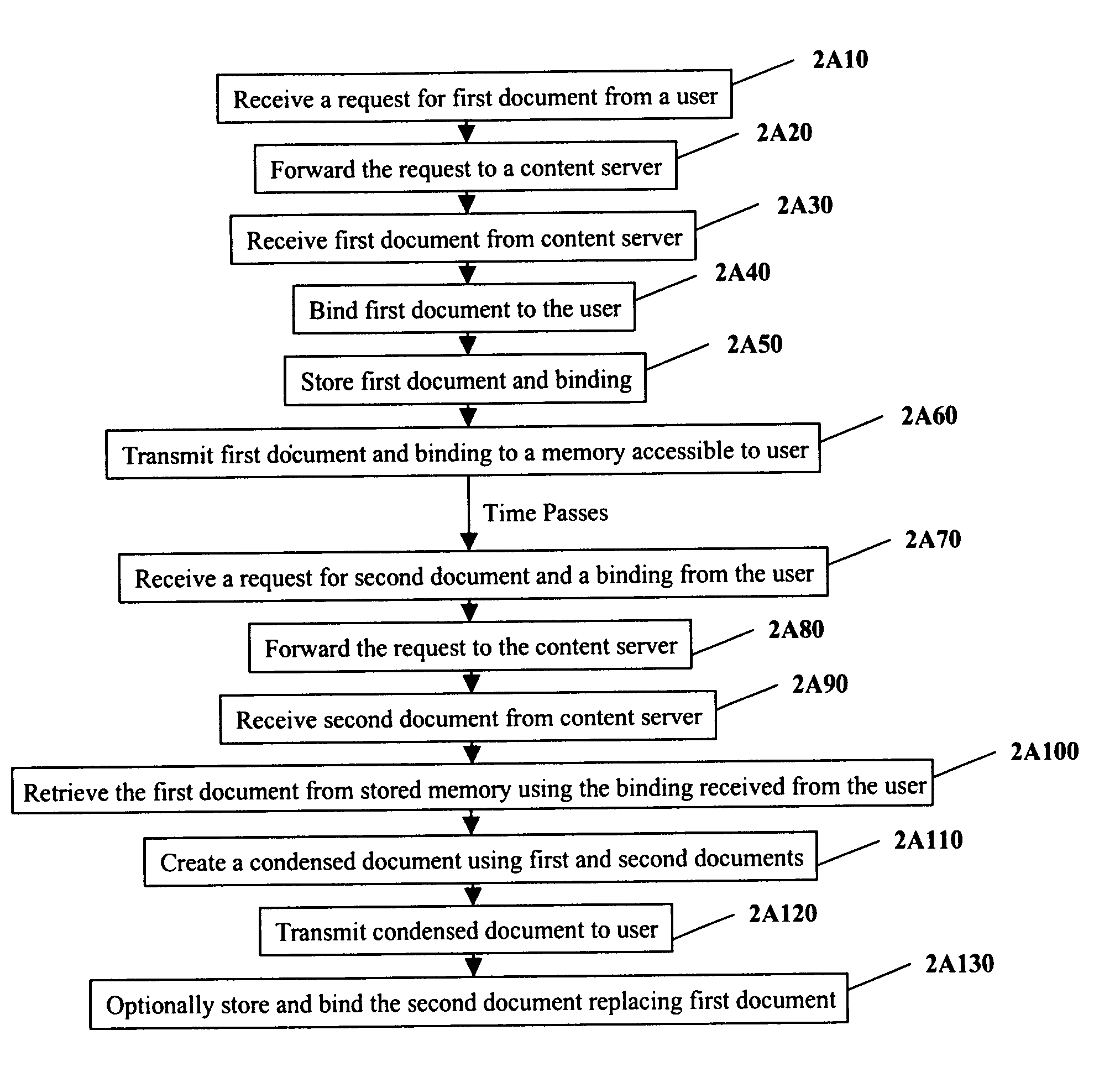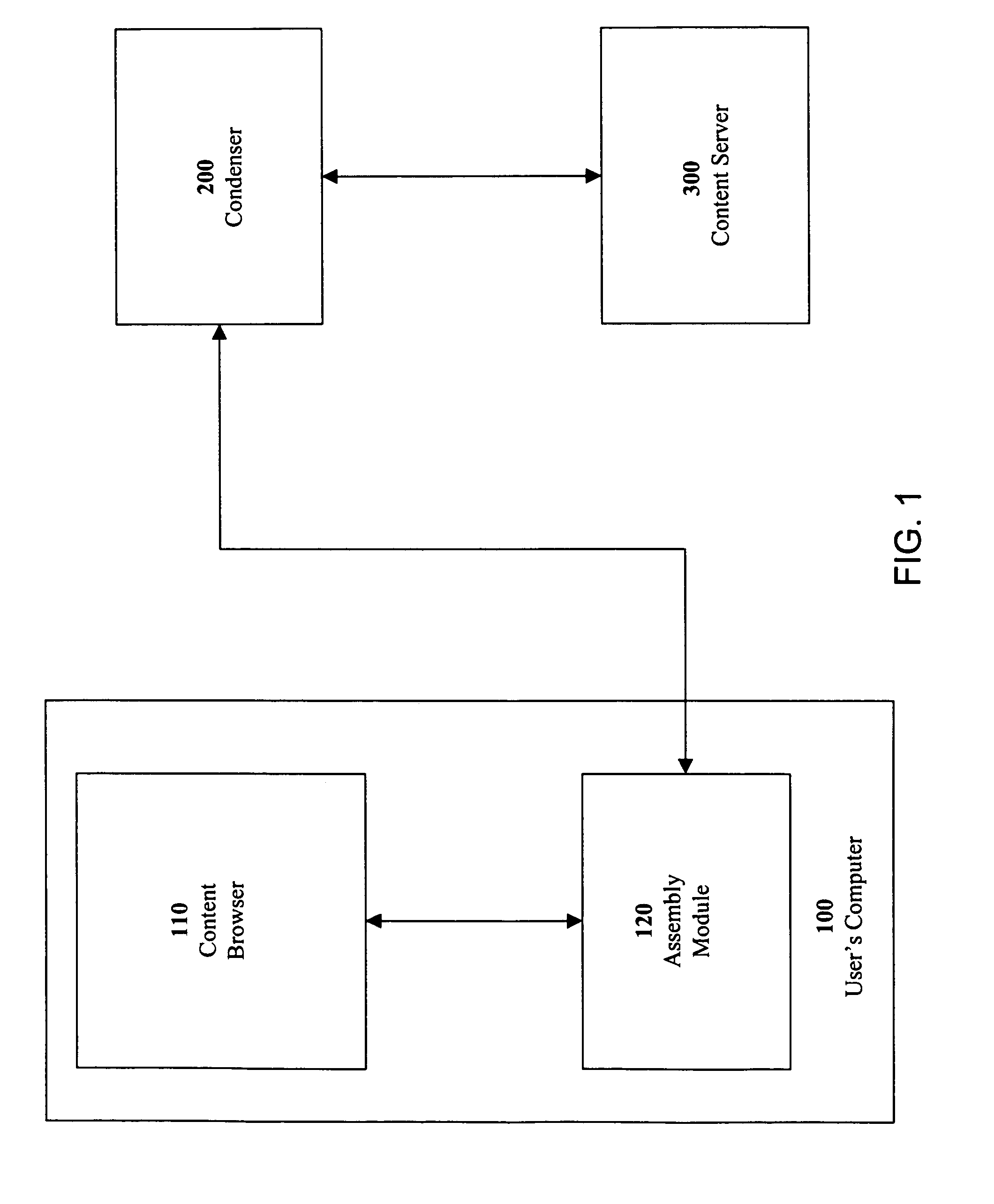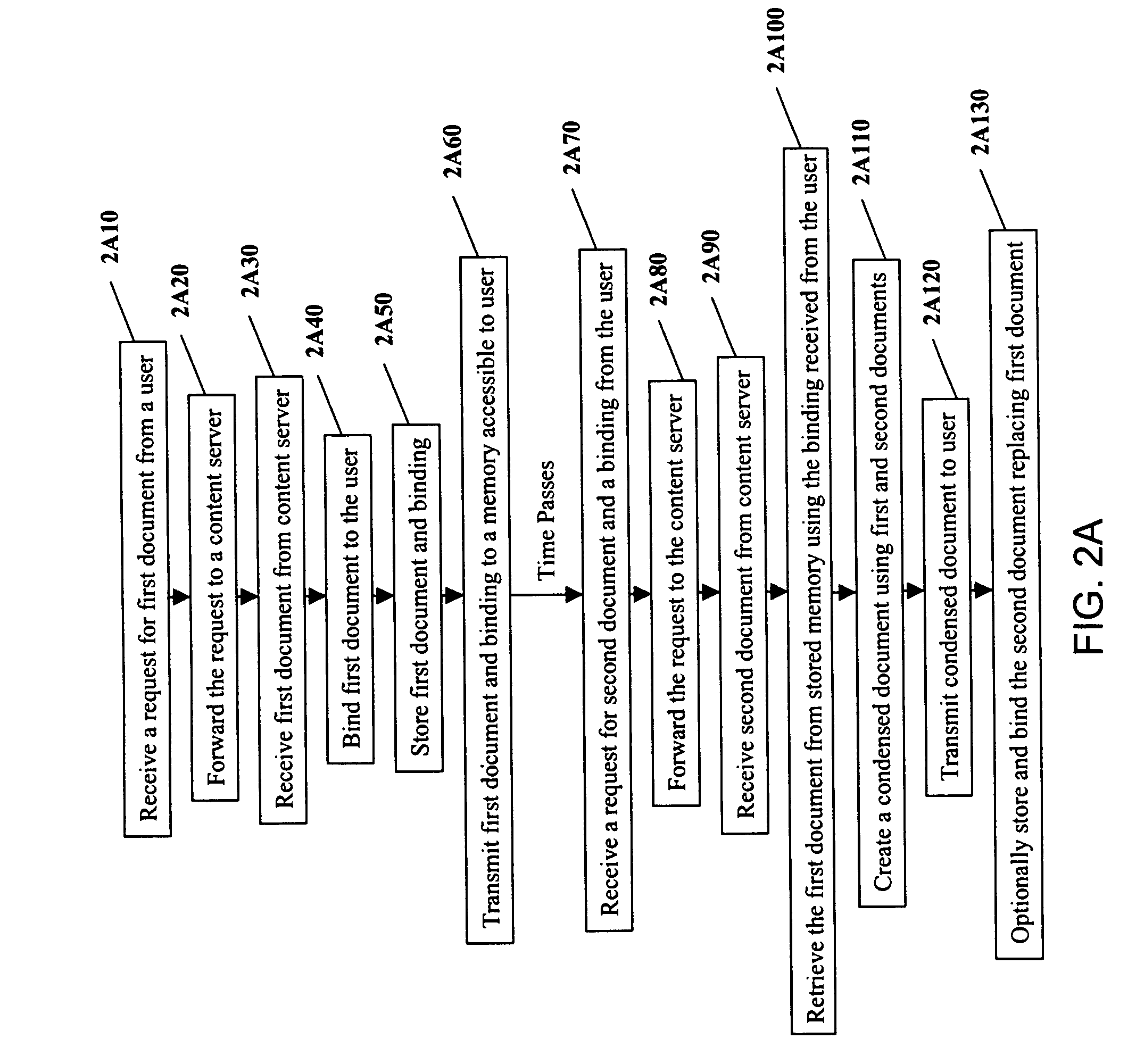Method and system for accelerating the delivery of content in a networked environment
a network environment and content technology, applied in the field of networked environment content acceleration and congestion reduction, can solve the problems of inefficient utilization of network bandwidth between the user and the news site, network congestion and long download times, cache servers suffering several limitations, etc., to speed up the download performance, reduce bandwidth usage, accelerate the effect of content delivery
- Summary
- Abstract
- Description
- Claims
- Application Information
AI Technical Summary
Benefits of technology
Problems solved by technology
Method used
Image
Examples
Embodiment Construction
[0018]FIG. 1 is a block diagram illustrating an exemplary computer system for accelerating the delivery of content in a networked environment. For convenience, the invention will be described herein with respect to “documents,” which should be understood to include any content-bearing items transmitted in a networked environment, including, without limitation, files, images, objects, programs, scripts, and other kinds of documents.
[0019]The system contemplates a network of computers and software running thereon including a user's computer 100, a condenser 200, and a content server 300. The user's computer 100 further includes a content browser 110 and an assembly module 120. The assembly module 120 may be implemented in many ways. In an exemplary embodiment, the condenser 200 ships the assembly module 120 as a self-unwrapping Javascript program to the user's computer 100 during an initial interaction between the condenser 200 and the user's computer 100. In alternate embodiments, th...
PUM
 Login to View More
Login to View More Abstract
Description
Claims
Application Information
 Login to View More
Login to View More - R&D
- Intellectual Property
- Life Sciences
- Materials
- Tech Scout
- Unparalleled Data Quality
- Higher Quality Content
- 60% Fewer Hallucinations
Browse by: Latest US Patents, China's latest patents, Technical Efficacy Thesaurus, Application Domain, Technology Topic, Popular Technical Reports.
© 2025 PatSnap. All rights reserved.Legal|Privacy policy|Modern Slavery Act Transparency Statement|Sitemap|About US| Contact US: help@patsnap.com



